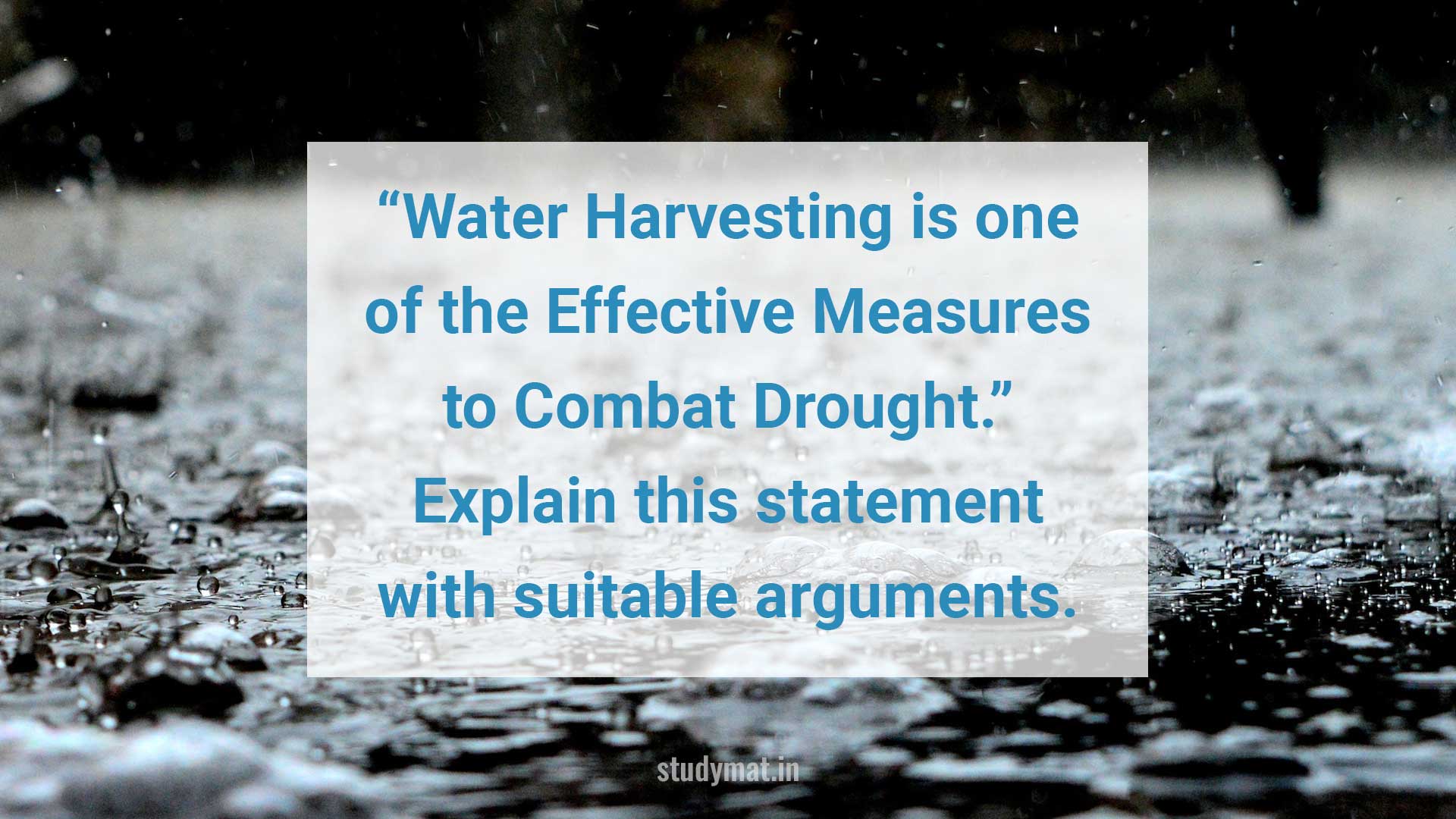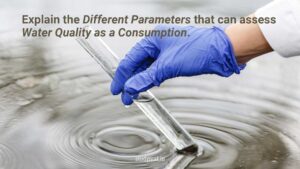In this article, we will discuss “Water Harvesting is one of the Effective Measures to Combat Drought.” Explain this statement with suitable arguments.
“Water Harvesting is one of the Effective Measures to Combat Drought.”
Water Harvesting is an effective measure to combat drought, especially in areas that are prone to water scarcity. Here are some arguments to support this statement:
1. Conserving Rainwater: Water harvesting involves collecting and conserving rainwater, which can be used to recharge groundwater, irrigate crops, and meet domestic and industrial needs. This helps to address water scarcity in areas where rainfall is limited or irregular.
2. Enhancing Water Availability: Water harvesting can enhance water availability during periods of drought by increasing the amount of water available for use. This can help to reduce the impact of drought on agriculture, industry, and domestic water supply.
3. Mitigating Soil Erosion: Water harvesting can help to mitigate soil erosion by reducing the speed and force of runoff during heavy rains. This can help to prevent soil degradation and maintain soil fertility, which is critical for agriculture.
Read Also:
Define Natural Calamities and Its Types with suitable examples.
Explain the following term Public Health.
How does the Environment Influence Human Health? Explain it in detail with suitable examples.
4. Promoting Sustainable Water Management: Water harvesting promotes sustainable water management practices by encouraging individuals and communities to conserve and use water more efficiently. This can help to reduce water waste and ensure that water resources are used in a sustainable manner.
5. Cost-Effective: Water harvesting is a cost-effective measure to combat drought compared to other measures such as desalination and water transport. It requires minimal investment and can be implemented using simple and low-cost technologies.
Examples of Water Harvesting techniques include rooftop rainwater harvesting, contour bunding, and check dams. Rooftop rainwater harvesting involves collecting rainwater from rooftops and storing it in tanks for later use. Contour bunding involves constructing bunds along the contour of the land to conserve rainwater and prevent soil erosion. Check dams are small dams constructed across streams or gullies to collect rainwater and recharge groundwater.
In conclusion, water harvesting is an effective measure to combat drought as it promotes sustainable water management, enhances water availability, mitigates soil erosion, and conserves rainwater. By implementing water harvesting techniques, individuals and communities can reduce the impact of drought and ensure the availability of water for future generations.
FAQ:
- How does water harvesting help in times of drought?
- What harvesting is one of the effective measures to combat drought?
- Is the water harvesting system an effective measure?
- Why is the water harvesting system an effective measure to reduce the problem of water scarcity?
Follow Us:
If you like this article, you can Follow us on Facebook.
Also, you can Join our Official Facebook Group for QnA Sessions and Discussions with the worldwide IGNOU community.


